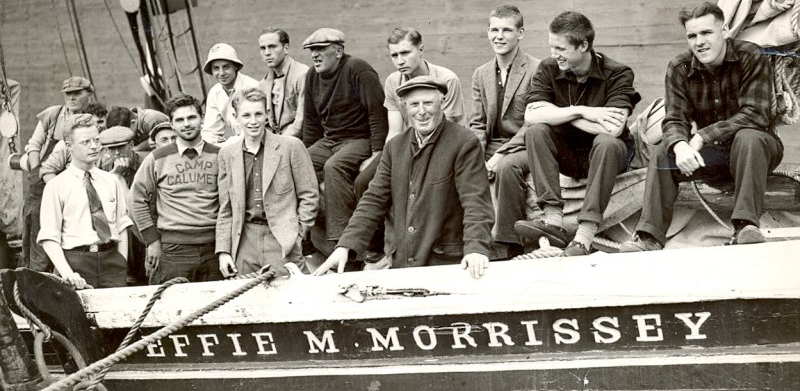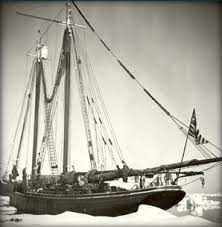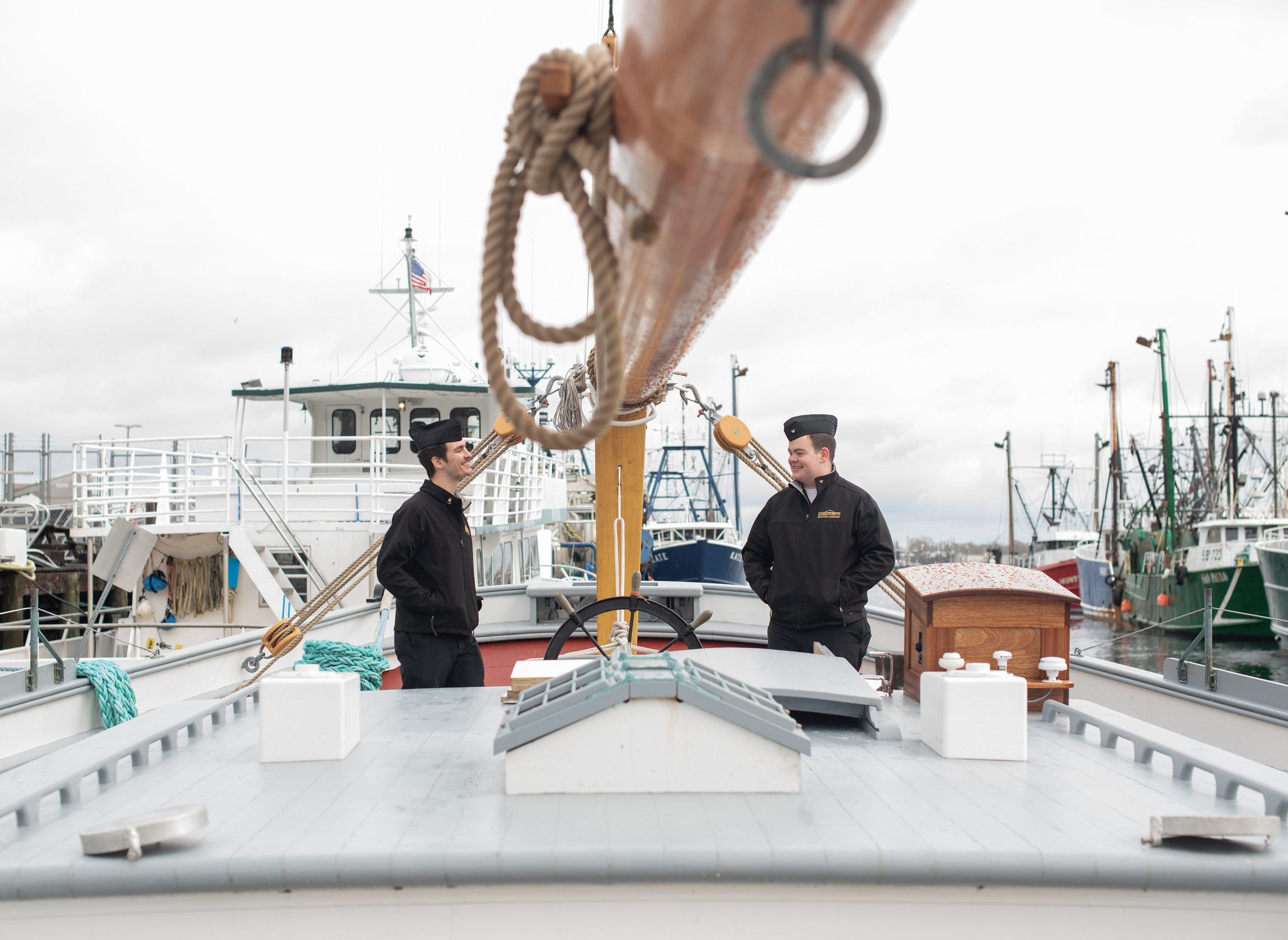Menu toggle
The Effie M. Morrissey launched as part of the Gloucester fishing fleet venturing to the banks of Newfoundland, Nova Scotia and off the coast of Gloucester. She was the last ship to be built for the Wonson Fish Company and successfully fished the waters for thirty years bringing in over 200,000 pounds of fish.
In 1926, noted Arctic explorer and experienced Captain Robert A. Bartlett purchased the ship and embarked on two decades of explorations to the Arctic. These expeditions gathered flowers for the New York Botanical Garden, collected wild fowl for the Museum of Natural History and brought back items for the Smithsonian and the Museum of the American Indian. In the Second World War, the Effie M. Morrissey entered the US Naval service and was stationed in Greenland. She helped survey the Arctic monitoring for submarines and brought supplies to military bases. After Captain Robert Bartlett died in 1946, the ship was sold to the Jackson Brothers to be used to carry mail and passengers in an inter-island trade in the South-Pacific. In 1947, while docked in Statten Island, a fire aboard the Morrissey nearly ended her career.
In 1948, Henrique Mendes of the Cape Verde Islands and his sister, Louise Mendes of Egypt, Massachusetts purchased the Morrissey and towed it to New Bedford, Massachusetts, for repairs. The schooner was renamed Ernestina after Henrique Mendes’ daughter. The schooner started a new life as a trans-Atlantic packet ship that transported food, passengers and cargo between New England and the Cape Verde Islands off the west coast of Africa, close to Senegal. For two decades the Ernestina would make this trans-Atlantic voyage. This voyage became known as the Cape Verdean-American Packet Trade. Ernestina was resold in 1967 and continued the inter-island trade for another six years. In 1976, a Cape Verdean group in Providence requested that the Ernestina be present for the United States Bicentennial celebration. Cape Verde agreed and prepared the ship for the journey back to the United States. Unfortunately, due to rough seas and damage to the ship, she never made it to the celebration.
In 1982, the Republic of Cape Verde gave the Commonwealth of Massachusetts Ernestina, “as a gift and symbol of cooperation”. The Ernestina was one of the last ships built in Essex that brought immigrants from the Cape Verde Islands to the United States. In 1982, the hull was completely rebuilt in Cape Verde and she sailed to the United States with a Cape Verdean and US crew.
The Ernestina became a National Landmark in 1990 and in 1997 the U.S. Congress created the New Bedford Whaling National Historical Park and included the Ernestina. On July 8, 2019 Governor Charlie Baker signed an “Act to preserve the Schooner Ernestina-Morrissey”. In September 2019, the Massachusetts Senate transferred stewardship of the schooner to the Massachusetts Maritime Academy. With the new legislation, work began on Phase II on the Ernestina-Morrissey. Phase II was completed in Boothbay Harbor, ME and consisted of the installation of living quarters, masts, sails and updated systems. The senate stated that the Ship’s homeport would be in New Bedford and it must remain there for at least 90 days per calendar year.
Massachusetts Maritime Academy will focus the efforts of the SSV Ernestina-Morrissey on undergraduate sail-training and leadership training for cadets, K-12 STEM programming, and community outreach and awareness within the Commonwealth of Massachusetts and beyond. According to Massachusetts Maritime Academys president, Admiral Francis McDonald, “Sail training, leadership, and seamanship programs are just a few of the subjects envisioned for cadet training. Community and cultural programs, while alongside the Cape Cod Canal and the New Bedford State Pier, will also be a mainstay of her future life. We look forward to our new role in the long history of the SSV Ernestina-Morrissey.” These three pillars will look to ensure the legacy of SSV Ernestina-Morrissey as an educational asset for the Commonwealth of Massachusetts.


